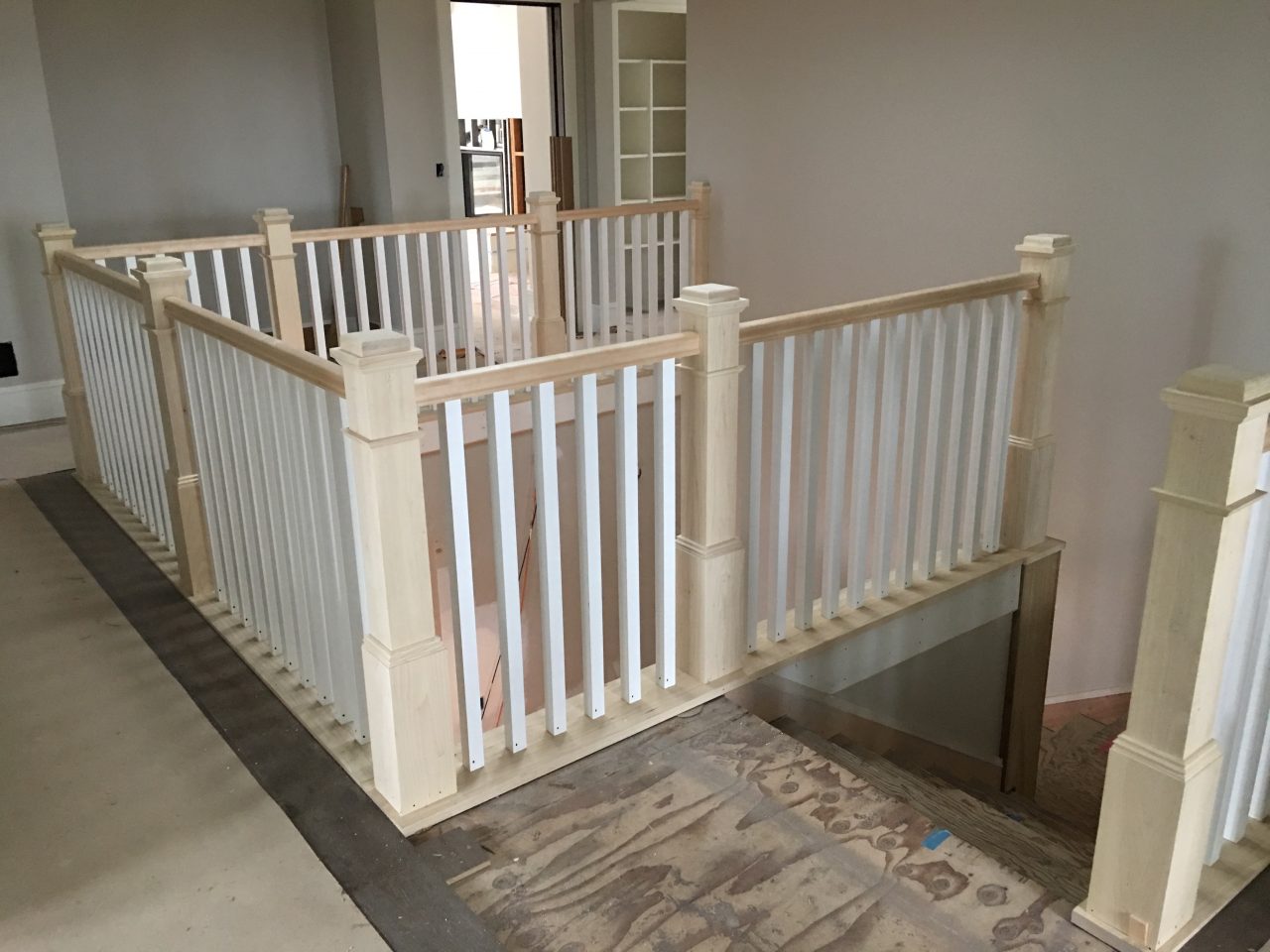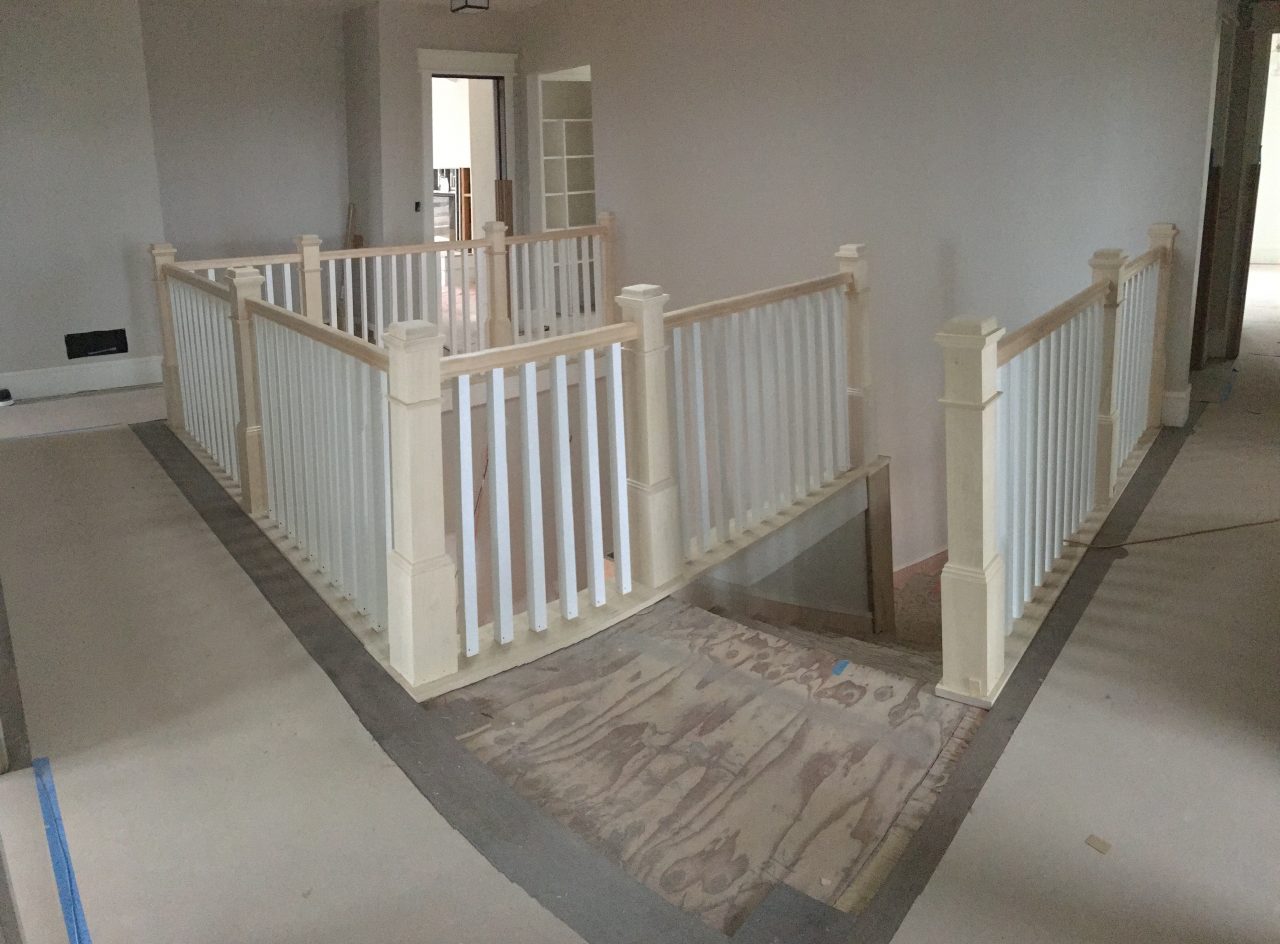I’ve gotten quite an education on stair railings over the last two months. It fell upon me to determine the code requirements we had to meet, what parts we needed and what designs, and the particular quantities and lengths.
For starters, a few terms
Newel post – an upright post that supports the handrail of a stair banister.
Baluster – a short pillar or column, typically decorative in design, in a series supporting a rail or coping.
Handrail – we should all know this one. 🙂
Bottom rail / plate – the rail or plate that the balusters and possibly newel posts land on.
It took several meetings with the carpenter to determine the final number of newel posts, half newel posts (that terminate on a wall), and balusters. For the handrail, we needed to make sure that the lengths we ordered were enough to cover all the individual spans in one piece; same with the bottom plate material.
Handrail also comes in two varieties, with or without a plow. A plow is a trench in the bottom of the handrail that its the blusters, to make them easier to secure. You then use what is called a fillet, a small piece of flat material, to fill in the sections of the plow between the balusters, on the bottom of the handrail.
The result of all that looks like this for the guard rail on our second floor landing.


The rest of the railing will go in after the stair treads and risers are put in. For the stair treads, we are using the same hardwood flooring we are using for much of the house, a little of which you can see above. But it has to be made into nosing (rounded and finished) to use at the edge of the stair treads which we are still waiting on.